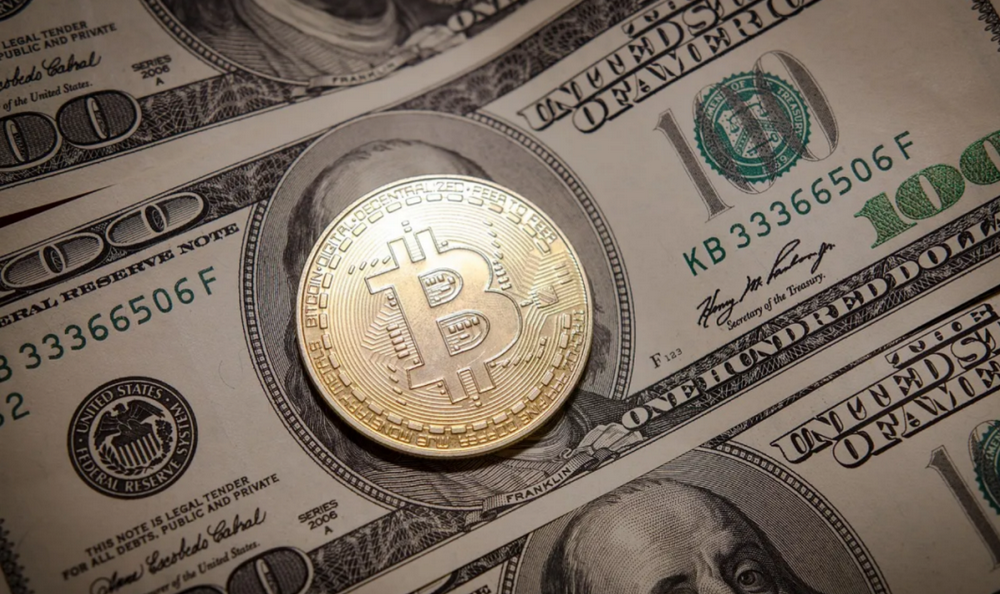Opinion | ETH Spring is coming?
Today, the ETH market price broke through the $200 mark, causing an uproar. At the same time, the daily consumption of Gas in the Ethereum network has also reached a record high. See below:

Ethereum Gas daily consumption trend chart
Let's first look at the analysis of the recent Ethereum network by Coin Metrics, a research platform for crypto-equity markets.
- The Fed cut interest rates again by 25 basis points, and bitcoin "rocket fuel" is ready.
- Bitcoin continues to remain weak, mainstream currency suspends offensive adjustments pending
- BTC and ETH: Positioning victory
According to Coin Metrics, the current ETH day transaction fee is surpassing BTC : As of September 15, 2019, the ETH day transaction fee in the Ethereum network reached $182,899, and the BTC daily transaction fee in the bitcoin network was $185,993. The two are very close. See below:

Trends in ETH and BTC daily transaction costs since 2019
The chart above shows the trend of ETH and BTC daily transaction costs since 2019. It can be seen that the ethical transaction fee (blue line) is less volatile than the BTC daily transaction fee (green line). At the same time, since 2019, the ETH day transaction fee has repeatedly exceeded the BTC day transaction fee (that is, the blue line exceeds the green line). For example, on February 19, 2019 and March 18, 2019, the ETH Day transaction fee exceeded the BTC day transaction fee.
Transaction costs represent the real needs and usage of blockchain networks. High transaction fees are critical to the long-term security of blockchain networks. When block rewards decrease over time (ie, block rewards are halved), transaction costs will account for an increasing share of miners' revenue. Therefore, the total cost is a strong signal for the safety and long-term sustainability of the entire blockchain network.
The chart below shows the trend of the BTC/ETH daily transaction fee ratio since 2018 (we chose to omit the situation before 2018, because before 2018, the BTC's daily cost is often at least 10% higher than the ETH's daily fee. 25 times).

Trend of BTC/ETH daily transaction fee ratio
In the above figure, the blue line indicates the trend of the BTC/ETH cost ratio, and the green line is the dividing line of the BTC/ETH cost ratio: if the blue line is above the green line, the ratio of BTC/ETH exceeds 1 (this means The daily cost of BTC is higher than the ETH day fee); if the blue line is below the green line, it means that the ratio of BTC/ETH is less than 1 (this means that the daily cost of BTC is lower than the ETH day fee).
As can be seen from the above figure, the 2018 ETH day transaction fee has exceeded the BTC day transaction fee for some time, but most of the time, the BTC day transaction fee exceeds the ETH day transaction fee. In fact, from April 2019 to mid-August, BTC's daily transaction fee has soared. During these four months, BTC's daily transaction fee basically exceeded 5-10 times of ETH's daily transaction fee. .
But in the past 30 days, BTC's daily transaction fees have been falling sharply, while ETH's daily transaction fees are soaring. There may be many factors related to this change. Coin Metrics believes that one of the major reasons for the reversal of this round of daily transaction fees is: Tether is moving its bitcoin-based Omini protocol to Ethereum.
The stable currency Tether (USDT) based on the Omini protocol was originally built on the Bitcoin blockchain, but currently Tether also supports token versions based on the Ethereum protocol. Since 2019, Tether users have been migrating from Bitcoin-based USDT to Ethereum-based USDT.
As shown in the figure below: In the figure below, the blue line indicates the trend of bitcoin-based USDT trading volume, and the green line indicates the trend of USDT trading volume based on Ethereum.

Bitcoin-based USDT daily trading volume (blue line) and USDT daily trading volume (green line) based on Ethereum
As can be seen from the figure, the daily trading volume (blue line) of the bitcoin-based USDT has been increasing for most of 2019, and even reached the highest daily trading volume on August 7, 2019. Since then, however, the daily trading volume (green line) of the USDT based on Ethereum has soared and peaked on September 9, 2019.
In fact, the USDT trading volume based on Ethereum is growing, and on September 8, it accounts for more than 25% of all Ethereum network transactions. Since mid-August 2019, the USDT trading volume based on Ethereum has occupied more than 10% of the total Ethereum network daily trading volume, as shown in the following figure:

Based on Ethereum's USDT daily trading volume, the percentage trend of Ethereum's entire network trading volume
Similarly, recently, the USDT daily transaction volume based on Ethereum also exceeded the bitcoin-based USDT daily transaction amount, and recently reached the historical maximum amount, as shown in the following figure. The chart below shows the 7-day moving average of the bitcoin-based USDT (blue line) and the ETF-based USDT (green line):

In addition, the number of account addresses holding at least $10 USDT also showed a similar trend. The chart below shows the number of unique bitcoin-based addresses (blue lines) holding at least $10 USDT and the number of unique addresses based on Ethereum (green line): it can be seen that at least $10 is held in Ethereum. The number of USDT addresses is catching up with the number of USDT addresses in Bitcoin.

The reason for choosing an account with at least $10 USDT is because the amount is small enough (to cover most retail investors) and large enough (ignoring unimportant accounts), although many users have multiple addresses.
At the same time, the daily consumption of the Ethereum's Gas has recently risen to a historical peak, as shown in the figure below. Coin Metrics believes this is most likely due to the recent increase in USDT trading volume based on Ethereum.

According to ethgasstation.info, in the past 30 days, the most used Gwei based on the ETF's USDT transactions (when writing this article).
Let us look at the percentage change in ETH transaction fees and BTC transaction fees in miners' revenue (remarks: miners' income = block reward + transaction fee). See below:

As can be seen from the figure, in the past 30 days, in the income of miners, the proportion of ETH transaction fees has begun to catch up with the BTC transaction fee.
Coin Metrics believes that all of the above data indicates that the reason for the recent ETH/BTC transaction fee reversal is likely to be driven by the conversion of Bitcoin-based USDT to Ethereum. If this is the case, as more and more users turn to the USDT based on Ethereum, this shift will continue to move forward.
According to an analysis by appeal Coin Metrics, the platform believes that the main reason for the recent increase in Ethereum's Gas usage is that the USDT trading based on Ethereum consumes a large amount of Gas. The increase in the consumption of the Ethereum network's network means the increase in the usage rate of the network and the increase in the transaction volume. This often leads to network congestion, which promotes the rise of ETH transaction fees, which in turn promotes the rise of ETH prices to some extent.
But in fact, as the data from Coin Metrics above shows, the USDT trading volume only accounts for about 20% of the Ethereum network . This is consistent with the data in Glassnode below: the current amount of Gas used in the Tether (USDT) transaction in the Ethereum network (the dark blue) is only about 20%, compared to the Gas ratio used in the ETH transaction (shallow). Blue) Smaller, the largest share of the consumption of smart contracts other than Tether, ERC721, ERC20 and ETH.

What are the reasons for the recent rise in ETH?
In the past six months, the hash rate (computing power) of the Ethereum network has continued to increase, as shown in the figure below. This means that despite the uncertainties in the future of Ethereum network mining (including whether ProgPoW will be implemented and the arrival of Eth 2.0), miners of the current Ethereum network are still bullish on ETH prices.

Etihad network's upward trend in computing power in the past 6 months
At the same time, the value of ETH locked in DeFi is also rising, and continues to hit a record high. See below:

The rising trend of ETH value locked in DeFi
The number of daily active addresses of the Ethereum network has also reached a new high in 10 months. See below:

Ethereum network daily active address number trend
As of now, all DeFi agreements have issued more than $500 million in loans, which is an important milestone. See below:

Loan ratio of loans issued by each DeFi agreement
Recently, Santander announced the issuance of a $20 million bond on the Ethereum blockchain; Harbor recently announced the issuance of $100 million in real estate fund tokens at Ethereum; BitPay, the world's largest blockchain payment provider, announced Support ETH…

Is the spring of ETH really coming? For the time being, all these factors are driving the arrival of spring.
Edit | Jhonny
We will continue to update Blocking; if you have any questions or suggestions, please contact us!
Was this article helpful?
93 out of 132 found this helpful
Related articles
- Is the Fed a resolution for Bitcoin?
- Line's cryptocurrency exchange is online, 80 million Japanese users can conduct cryptocurrency transactions
- The German government approves a blockchain strategy to prevent stable currency from becoming an alternative currency
- "Encryption Mom": US encryption talent is losing, clear regulation is imminent
- Babbitt column | Investment opportunities in the secondary market are greater than the primary market
- Vernacular than the original chain cross-chain technology
- The market is gradually stabilizing, waiting patiently for new trends






